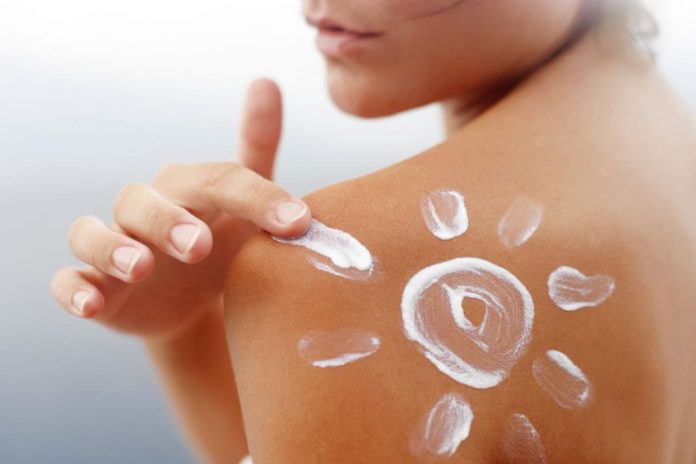Growing up on the North Shore of Oahu, I admit to spending countless hours in the sun, devoid of any UV protection. With the beach as my backyard playground, it was typical for me to surf and fish from sunrise to sunset with no wetsuit, hat, sunglasses or sunscreen. So some may find it hypocritical for me, as a dermatologist, to be admonishing patients for spending too much time outdoors with no sun protection. My excuse is a simple one: back in the day, there was no awareness. I do not recall ever being educated on the harmful effects of UV rays as a child. No one ever mentioned that too much UV radiation could lead to skin cancers, including one of the most deadliest forms, melanoma. That message simply did not exist. Furthermore, I did not have parents barricading the door and slathering on a handful of sunscreen before I left the house, a ritual that my two children now go through daily. My multiple agonizing sunburns did teach me to limit the amount hours I spent in the sun, but I had no idea that numerous doses of UV exposure would have a cumulative effect over time. It was not until my early years in medical school that I gained an in-depth understanding of the deleterious effects of the sun’s UV rays. These days, the concept of sun-protection is gaining a larger audience and products that pro-mote sun-protection are ubiquitous. Rash guards with UV protection, sunglasses, and a myriad of cosmeceutical products with sunscreen, including moisturizes, makeups, and lip gloss line the shelves of stores. We have entered the age of awareness, and with the ever dwindling ozone layer and living in one of the sunniest places in the world, we have no choice but to jump on the band-wagon.
So how does sun damage occur?
It is a well known fact that exposure to UV rays is a risk factor for the development of skin cancer. UV rays produced by the sun are capable of damaging the DNA in skin cells. Repeated UV damage to DNA eventually leads to mutations in genes that are important in preventing cancer. When these genes become mutated, the skin then loses its ability to ward off cancer. This process takes years and requires numerous mutations to take place before the skin’s ability to fix these mutations are over-whelmed. This is when cancers are likely to develop. This also explains why people usually develop skin cancers later in life, despite their efforts of sun-protection during their adult years. Most people receive between 25% and 50% of their lifetime sun-exposure by the age of 18. Therefore, it is paramount that we instill the importance of sun-safety from a young age.
What types of skin cancers are there?Skin cancer has become the most common type of cancer in the U.S. with over 2 mil-lion people diagnosed each year. One in five Americans will go on to develop skin cancer. The 3 main types of skin cancers are: (1) basal cell carcinoma, (2) squamous cell carcinoma, and (3) melanoma.
Basal cell carcinoma:
Basal cell carcinoma is the most com-mon form of skin cancer. These cancers arise within sun-damaged skin and originate from the basal layer of the skin (the deepest portion of the epidermis, which is the upper skin layer). Basal cell carcinomas often appear as a non-painful shiny bump or red, scaly patch. Sometimes, they can resemble eczema or psoriasis. Other times, they appear as an open, bleeding sore. In their earlier stages, basal cell carcinomas are easily treated. However, if left untreated for an extended period, the tumor may invade deeper structures beneath the skin, requiring more extensive surgical treatment. Basal cell carcinomas on the scalp and face have a higher risk of recurrence, and surgical removal of them can result in unsightly scarring. People that have acquired a basal cell carcinoma are at higher risk for developing more over the years. Thus, it is important for someone who has had a basal cell carcinoma to schedule regular visits to a dermatologist for skin cancer screening.
Squamous Cell Carcinoma:
Squamous cell carcinoma is the second most common type of skin cancer. This cancer arises within the squamous cell layer of the epidermis, hence the name. These cancers also tend to occur in areas frequently exposed to the sun, such as the face, ears, scalp, hands, arms and legs. Fair skinned people with light hair and blue eyes are
at higher risk for acquiring squamous cell carcinoma, as well as those who spend long hours outdoors in the sun. Squamous cell carcinoma can also occur within scars, ulcers, burns, and areas that have previously been exposed to x-rays. Precancerous growths, known as actinic or solar keratoses, can be the first step to develop-ing a squamous cell carcinoma. Up to 10 percent of these keratoses can evolve into squamous cell carcinoma. Squamous cell carcinomas usually appear as rough, scaly patches and bumps. Occasionally, they can look like a wart or a non-resolving pimple or cyst. They occasionally hurt, bleed and can grow rapidly. Similar to basal cell carcinomas, squamous cell carcinomas that are diagnosed and treated early on are almost always curable. Those that are left untreated can invade the underlying tissue and occasionally become fatal by metastasizing to other organs.
Melanoma:
Melanoma is the most severe and deadli-est form of skin cancer. It accounts for 3 percent of all skin cancers, but results in 75 percent of skin cancer deaths. This form of cancer arises within the melanocytes, which are the pigmented producing cells that color our skin, eyes and hair. There are four different types of melanoma: (1) superficial spreading melanoma, (2) lentigo maligna, (3) acral lentiginous melanoma, and (4) nodular melanoma.
Superficial spreading melanoma is the most common type of melanoma and appears as a tan, brown or multicolored patch or bump. Most tend to occur on the torso in men and on the legs in women. This type of melanoma can originate from a previously benign mole, so it is important to monitor your moles for any type of change. Lentigo maligna typically occur in elderly people on sun-damaged skin. They appear as brown or darkly pigmented, irregularly shaped patches that can sometimes be elevated. This is the most common form of melanoma in Hawaii.
Acral lentiginous melanoma is very differ-ent from the others, as it usually appears as a dark discoloration on the hands and feet, occasionally appearing under the nails. It is the most common type of melanoma in African-Americans and Asians.
Nodular melanoma is usually a dark brown, black, or multi-colored nodule. This type of melanoma tends to occur in elderly people and tends to be more aggressive.
A person who has had a family member with a history of melanoma has a greater change of developing the disease. People who have numerous odd-colored or odd-shaped moles should keep a close eye on them and have them checked if there is any concern. Majority of the melanomas are diagnosed at an early stage and surgical removal of them can be curative. However, a number of melanoma do escape early detection and go on to become fatal.
Sun-Safety Tips:
The key to preventing skin cancer is to practice sun-safety. Avoid direct sunlight from the hours of 10am to 4pm. Apply a sunscreen with an SPF of 30 or higher, 30 minutes prior to going outside. Wear clothing with ultraviolet protection, a wide-brimmed hat, and sunglasses. Avoid tanning and UV tanning booths
If you have a question you would like to ask Dr. Greg Sakamoto, you can email him at: [email protected]









